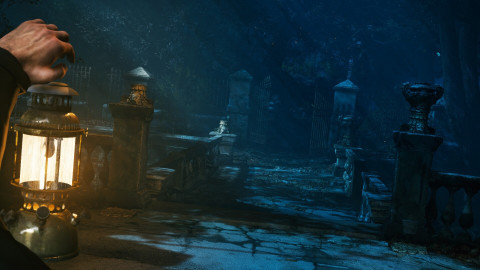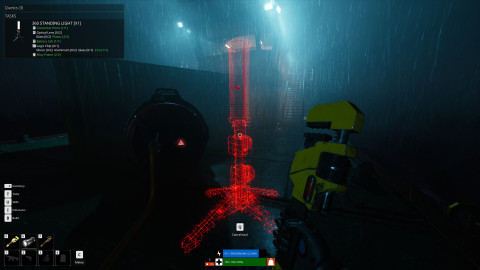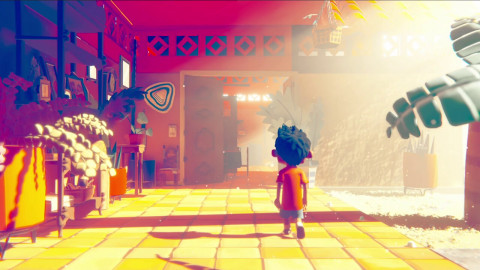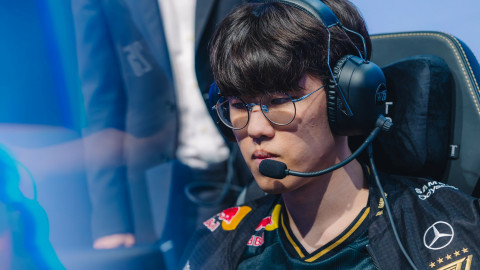
Developer: Capcom
Publisher: Capcom
Platforms: PS4, Xbox One, PC
Released: January 24, 2017
MSRP: $59.99
“Is this really Resident Evil?”
I’ve uttered those words exactly three times over the last 20-year span of Capcom’s iconic horror adventure franchise, Resident Evil. The first time was when I played Resident Evil 4, and the second was when the four-person co-op Operation Raccoon City just came out. Perhaps I was burned out after the sixth one, because I felt nothing when I came across Umbrella Corps last year, currently boasting a whopping five daily concurrent players on Steam.
The third - and likely not the last time - was when I saw the demo for RE7. I could not find any resemblance to the previous series from watching the E3 trailers or when playing the demo on PSN. Instead of the traditional third-person view, they implemented a first-person perspective. Rather than blonde cops or secret agents clad in velvet, there were realistic renditions of an decrepit old mansion and a family that was just as disturbing as their abode.
At first glance, RE7 may seem more akin to other horror games than its predecessors. After experiencing the demo, I affirmed to myself that this game was too scary for me to play; Nevertheless, I decided to go through it. As I progressed, I learned that RE7 actually stays true to the roots of the Resident Evil series - even to a mild letdown near the end.
First-Person View: Reinventing a beloved franchise
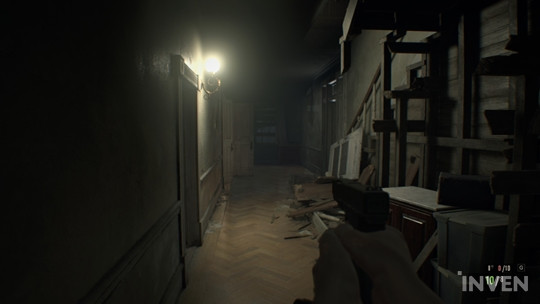
The Resident Evil series, which surprised even Capcom with how favorably it was first received, has made continued attempts to drastically shake things up over its 20-year history. Some of those changes unexpectedly laid the foundation for its status as a long-lasting video game franchises. For example, Resident Evil 4, which added an abundance of action elements, became a massive hit and received the most Game of the Year awards that year. Understandably, the Resident Evil series then shifted its focus to action and co-op features rather than survival and horror.
Since then, the franchise never ceased experimenting; they tried making an Umbrella Corps agent the main protagonist, releasing weekly episodes, and even making PVP the main selling point of the game. Much to Capcom’s dismay, most of those endeavors were met with less than positive results. The post-RE4 fans had no attachment to the gas-masked soldiers, while the pre-RE4 fans didn’t understand why they had to wait for the next episode. Eventually, having failed to captivate either side of the players, Resident Evil arrived at a dark and lackluster 20-year anniversary.
Perhaps inspired by this gloom surrounding the series, RE7 was released as a great departure from the trends of the recent games. There were rotting ingredients and leftover food scattered carelessly about the ruined house by previous tenants. Hallways are dimly lit by a lone lamp, and the shadows reach a level of realism unlike anything seen in previous titles. Gone were the Michael Bay-esque action sequences and faceless paramilitary agents. In their place, Capcom brought back the pure terror of the unknown, the same terror that captured fans so many years ago.

One other noteworthy change is the series’ first-ever use of first-person perspective. This new point of view is highly effective in driving the horror, because it immerses the players in what’s in front of them, leaving them blind to whatever might be behind them. Prior to the game’s release, this change in perspective was the reason RE7 was often compared to other horror games like Silent Hills PT and Outlast, which also use the first-person view.
The early stages of RE7, or what was playable in the demo, set a terror-inducing atmosphere that is comparable to the original Resident Evil. One difference RE7 has over other popular survival horror games is that player has the means to fight back. In the early parts of the game though, action sequences are suppressed, which maximizes the terror of running away from the undying Baker family. Unlike the action-packed experiences of previous installments, RE7 skillfully uses first-person perspective to deliver a whole new experience.
Aside from being a mechanism to intensify horror, RE7’s first-person perspective has other perks as well. For instance, fans of the previous games will be happy to know that it’s just as satisfying to use shotguns to blow up the infected and to shoot legs to topple enemies over. On the other hand, it seems considerably more difficult to find hidden items around the house. Useful items are scattered in easy-to-miss places like under a sofa or on top of a shelf. Perhaps the difficulty spike stems from the fact that the game now uses first-person view.
A Reason for the Numbered Title: Staying faithful to its roots

As I briefly mentioned before, RE7 is most terrifying up until the point where the main character shares a dinner with the Bakers early in the game. More accurately, the game is only scary until the player gets a hold of a weapon. Following the common trope of the horror genre, the protagonist finds a pistol on a dead policeman. From that point on, the game naturally follows Resident Evil’s tried-and-true formula of exploring the stage while passing through save points.
To escape the house, players must evade the unkillable members of the Baker family and secure items for survival. Some doors won’t open right away and provide an easy access to save points later on in the game. The mansion consists largely of the Main House, Old House, and Greenhouse. Areas for item foraging, boss fights, and save points are all placed in a sensible manner. From a gameplay perspective, these aspects are heavily borrowed from previous series, with different keys and minor puzzles bringing out nostalgic memories of the original Resident Evil.
The use of door as a means to drive the horror is also reminiscent of previous games. Titles from the pre-RE4 era all used a staircase or an opening door in the loading screen. Fans are all too familiar with the anticipation that comes from watching the door slowly creak open, afraid and unaware of what may lie on the other side. RE7 perfectly recreates that feeling. Although the ability to open a door with your hands was omitted from the retail build, the suspense of peaking through a partially open door is alive and well.

An additional feature that RE7 does well is the inventory. People often recall that the task of organizing the inventory is one of the major challenges of playing older Resident Evil games. Actually, working with a limited inventory has been a long-standing trope of Resident Evil even after the series took more action-oriented approach. Switching back to a survival-horror approach makes inventory management even more challenging. Players are often forced to decide between hanging onto bullets or abandoning them for some other useful items. While the players struggle to choose, the horrors lurking in the halls draw ever closer; RE7 excels at putting players in these uncomfortable situations.
There aren’t that many instances of players finding bullets in the house. However, players will easily come across ingredients such as chemicals, explosives, and herbs. Unlike explosives and herbs, which can be stacked, chemicals take one inventory slot per item, making it nearly impossible to hoard them unless the players craft items every chance they get. What makes matters worse is that those ingredients are necessary for crafting items, and players will find it difficult to part with them.
Thankfully, there are almost always big green item boxes that can be found near the cassette players, which serve as save points in the game. An iconic melody greets players when they are near those points, indicating that they are in a safe place. It goes without saying, but players will frequently find themselves returning to save points to store items. You think the immortal Baker family is frightening? Wait til you have to deal with the inventory.
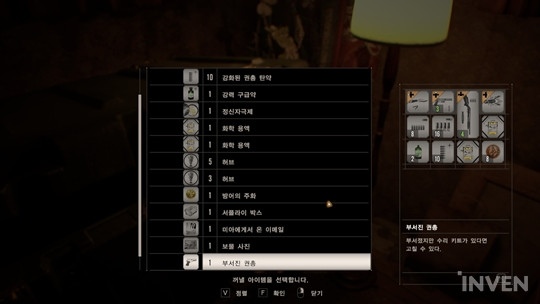
RE7 has callbacks to previous titles in many other ways. Aside from the similar game mechanics, players will find various journals located around the mansion that describe past events and a certain biochemical experiment that went awry. While the action-oriented games like RE4 through RE6 were like memos about massive biochemical terrorism, RE7 is more like a rich novel, telling the detailed story of a rural southern-American family.
After the Initial Horror: Things that could have gone better

Although I was thoroughly impressed with the immersive first-person view, decent pacing of the level design, and the pre-RE4 mechanics, there are some parts of the game that failed to live up to expectations; namely boss fights, enemy variety, and playtime.
Combat in RE7 is consists mainly of fights against members of the Baker family. They are persistent since they cannot be killed, but the gimmick somewhat overstays its welcome. I easily got tired of dealing with bosses that don’t seem to be affected by my attacks, and it didn’t particularly feel satisfying to defeat them after aimlessly attacking and blocking incoming damage.
This sentiment is exemplified well in the Marguerite fight. My only course of action was to use the torch for flame attacks and blindly fire shots to see where she feels pain. I couldn’t figure out how much damage the boss could take (apparently, it was a ton) while she was strutting her disturbingly long limbs around the greenhouse. Players do get ample ingredients for ammo after a boss fight, but it doesn’t change the fact that the whole process feels more tedious than rewarding. Additionally, I was taken out of the experience when Jack and Marguerite didn’t appear in the house after their respective boss fights. Wait, I thought they couldn’t be killed?

Aside from Jack and Marguerite Baker, other infected creatures, which were the results of a botched biochemical experiment, threaten the player throughout the game. The problem is that the creature variety is extremely limited. There are only four main types: a tarred-face humanoid, one with an enlarged right arm, a four-legged crawler, and a formidable hulking monster. There are also some bugs that Marguerite controls, but they don’t pose as much of a threat.
Since those four main types of monsters appear from start to finish, I quickly found them to be bland. That said, it doesn’t mean the overall difficulty is low, because these creatures can take a large amount of hits before they go down. I often found myself spending too many of my limited bullets and herbs when I was surrounded by a horde of the infected.
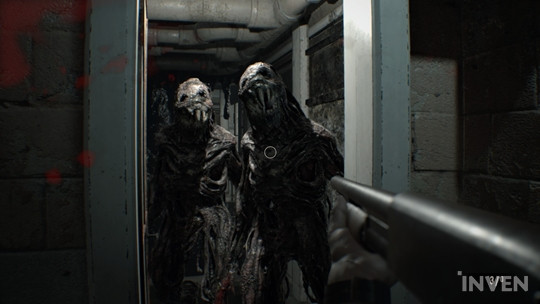
Regarding my issue with the playtime, I finished the game in under eight hours, which includes those hours I spent hiding from the Bakers and working on puzzles to progress the story. Obviously, it’ll take even less time to complete subsequent playthroughs. Given that the game mostly takes place in a physically limited space, ten hours to explore the house may feel adequate to some, but it’s still one of the more underwhelming parts of the game.
In any case, there’s a silver lining in terms of replayability. When I first watched the RE7 demo, I was worried if the game could motivate players enough to complete multiple runs because, at least from watching the demo, I couldn’t find any reasons for people who already knew all the jumpscare parts and story to continue playing after reaching the end. Fortunately, the game gives corresponding rewards for each difficulty and for speedruns, so completionists won’t have to worry too much about playtime.

A Worthy Entry into the Resident Evil Franchise: Will the trend continue?
Along with the first-person view and an excellent demo, this game is the first Resident Evil I have truly enjoyed in a long while. With a combination of the suspense and gameplay of the classic Resident Evil, the action elements of later titles, and a photo-realistic style that is almost haunting, RE7 proves itself to be a worthy successor to the Resident Evil franchise.
For those fans who were disappointed by the incomprehensible decisions the franchise has made over the course of its existence, RE7 is a title that has redeemed some of those decisions. I have no doubt that RE7 will serve as a milestone for the Resident Evil games to come. It may just be that the questionable experiments of the franchise were the reason RE7 has been a success. After seemingly endless trial and error, Capcom accumulated their notes in order to create a game that breathes new life into a supposedly dying genre. Regardless of the truth, RE7 is currently sitting at 85/100 on Metacritic, defying everyone’s expectations prior to its release.
Now that RE7 rekindled a possibility for change, it’ll be interesting to see what lies ahead for the series. Since historically, RE1 through RE3 and RE4 through RE6 respectively shared similar gameplay styles, RE8 and RE9 may possibly borrow from the RE7’s first-person perspective. Also keep in mind that RE2 is slated for a remake. What’s important to note is that this is only a beginning. I once again applaud the developer’s efforts in reviving the franchise and can’t wait to see what comes next.
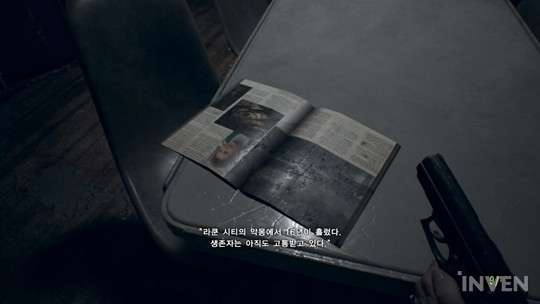


Sort by:
Comments :0



